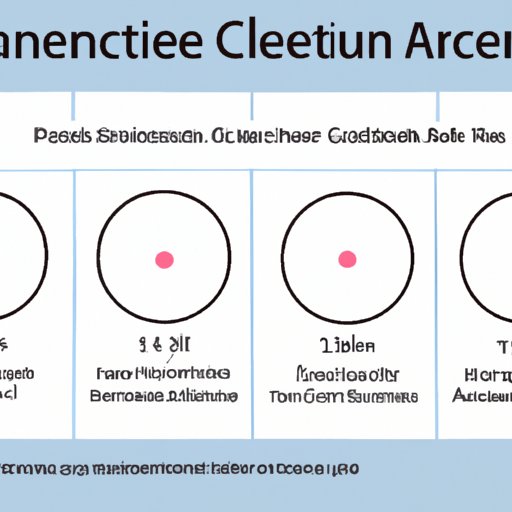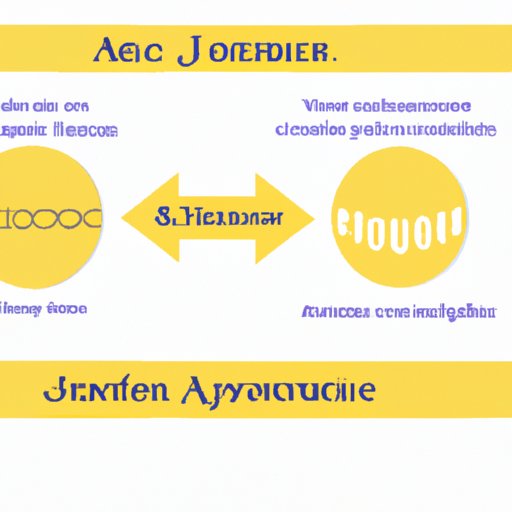
I. Introduction
Dealing with severe acne can be a frustrating and emotionally taxing experience. Fortunately, medications like Accutane have helped many people overcome this condition by controlling oil production and preventing the formation of acne. However, undergoing Accutane treatment requires a significant commitment, including adherence to a strict regimen and understanding the length of treatment. In this article, we will explore how long an Accutane treatment typically lasts, what factors can affect the duration, and what to expect when undergoing this medication.
II. Accutane 101: Understanding the Length of Treatment
Accutane is a brand name for isotretinoin, a powerful medication that targets the root cause of acne, namely overactive sebaceous glands. Accutane is a vitamin A derivative that can shrink these glands, reducing the amount of sebum, or oil, produced by the skin. By doing so, it can dramatically reduce the number and severity of acne breakouts.
Accutane is typically prescribed for people with severe acne that has not responded to other treatments. Most courses of Accutane treatment last between four and six months, although some patients may need to continue taking the medication for a longer period. The goal of the treatment is to achieve complete or near-complete clearance of acne and prevent it from recurring in the future.
The dosage and duration of Accutane treatment can depend on several factors, including the severity of the acne, the patient’s age and weight, and the presence of any underlying health conditions. Other factors that may affect the length of treatment include the rate at which the patient responds to the medication and whether or not they experience side effects.
III. Navigating Accutane Treatment: From Start to Finish
Before starting Accutane treatment, patients must undergo a thorough evaluation by a dermatologist to determine if the medication is appropriate for their needs. This typically involves a physical examination, blood tests, and possibly other diagnostic tests or screenings. Women who are of childbearing age must also take a pregnancy test to ensure they are not pregnant, as Accutane can cause birth defects if taken during pregnancy.
Once the patient has been cleared for treatment, they will begin taking Accutane as prescribed. The medication is typically taken with food, as this can help improve its absorption and reduce the risk of side effects. Patients may need to take Accutane twice daily for several weeks before seeing any noticeable improvement in their acne.
During the treatment, patients must return to their dermatologist for regular checkups and monitoring. This is important for several reasons, including the need to adjust the medication dosage as needed and to monitor for any potential side effects, such as dryness, rash, or joint pain.
After completing the treatment, patients may experience a period of acne relapse. However, in most cases, any recurrence of acne is less severe than the patient’s initial outbreak and can be effectively managed with less aggressive treatments.
IV. Breaking Down Accutane Treatment Duration: What to Expect
Accutane treatment typically progresses through three phases: induction, consolidation, and maintenance.
The induction phase is the initial period of treatment, when patients begin taking Accutane and experience the most noticeable improvement in their acne. This phase usually lasts for the first four to six weeks of treatment.
The consolidation phase is when the patient’s acne begins to plateau, and additional improvements become less noticeable. This phase typically lasts for the next eight to twelve weeks of treatment.
The maintenance phase is the final period of treatment and involves reducing the patient’s dosage gradually until they are no longer taking Accutane. This phase usually lasts for several weeks to several months, depending on the patient’s progress and response to the medication.
During each phase of treatment, patients should expect to experience side effects. Common side effects include dryness, peeling, and sensitivity of the skin, as well as dryness of the eyes and mouth. Other side effects can include headaches, back pain, and blood in the urine or stool in rare cases. Patients should report any side effects to their dermatologist promptly and follow any recommended treatments for managing them.
V. Accutane Treatment Timeline: A Comprehensive Guide
Here’s a closer look at what patients can expect during each phase of Accutane treatment:
Induction phase: This period usually lasts for four to six weeks and involves taking a high dose of Accutane to achieve rapid and significant improvement in acne. Patients may experience side effects during this phase, including dryness, flaking, and peeling skin, as well as increased sensitivity to the sun. Patients should avoid waxing, using harsh or drying skincare products, and getting any piercing or tattoos during this phase.
Consolidation phase: After the first month or so of treatment, most patients will begin to see less dramatic improvements in their acne. However, overall, their skin will continue to improve and will likely be noticeably clearer than before starting the medication. Patients may still experience side effects during this phase, including dryness, sensitivity, and itching. Patients should continue to avoid waxing and other activities that may irritate their skin and avoid too much sun exposure.
Maintenance phase: This period of treatment involves gradually reducing the dosage of Accutane until the patient is no longer taking the medication. This can take several weeks to several months, depending on the patient’s response to the medication and the rate at which their skin improves. Patients may still experience side effects during this phase, including dryness, sensitivity, and flakiness. Patients should continue to avoid waxing and other irritants and use gentle moisturizing products to keep their skin hydrated.
VI. The Ins and Outs of Accutane Treatment Length
While Accutane has a reputation for being a highly effective treatment for severe acne, it’s important to recognize that the medication isn’t without risks. One of the most significant risks associated with Accutane is the potential for severe birth defects if taken during pregnancy. For this reason, women of childbearing age are required to take regular pregnancy tests and use birth control throughout the entire duration of their treatment.
Other potential risks of Accutane treatment can include rash, joint pain, and even depression or mood changes in some patients. These risks are relatively rare, and most patients experience only mild side effects during their treatment. However, it’s essential to carefully weigh the benefits and risks of Accutane treatment with a healthcare provider before deciding to undergo the medication.
VII. How Long is Too Long for Accutane Treatment? Pros and Cons
The maximum recommended duration of Accutane treatment is six months. While some patients may wish to continue taking the medication for a longer period, this can increase the risk of severe side effects and may not necessarily be more effective in treating acne.
There are both pros and cons to longer and shorter periods of Accutane treatment. On the one hand, shorter treatments are generally associated with fewer side effects and may still be effective in treating acne. However, shorter treatments may also not achieve complete clearance of acne, and in some cases, acne may return shortly after the treatment is stopped.
On the other hand, longer treatments can provide more significant improvements in acne and may be more effective in preventing recurrence. However, longer treatments come with a higher risk of side effects, including dryness, sensitivity, and joint pain. Patients considering prolonging their Accutane treatment should talk to their healthcare provider to discuss the risks and benefits of longer treatment duration.

VIII. The Journey of Accutane Treatment: Length and Beyond
While Accutane treatment can provide significant improvements in acne, it’s essential to recognize that the medication is not a cure. After completing Accutane treatment, patients will need to continue to care for their skin carefully to prevent acne from returning. This may involve using gentle, non-irritating skincare products, avoiding harsh chemicals or physical exfoliants, and protecting the skin from the sun and other environmental factors.
Many patients who have undergone Accutane treatment report feeling more confident and self-assured after their skin has improved. However, it’s important to manage expectations and recognize that maintaining clear, healthy skin requires ongoing self-care.
IX. Conclusion
In summary, Accutane treatment is a highly effective but potent medication for treating severe acne. The duration and timeline of the treatment can vary depending on several factors, including the severity of the acne and the patient’s response to the medication. Patients should expect to experience some side effects during treatment, but these can usually be effectively managed with proper care and attention.
If you’re considering Accutane treatment for your acne, it’s important to talk to your healthcare provider about the potential benefits and risks of the medication. They can help you determine if Accutane is right for you and guide you through each phase of the treatment.
Ultimately, with proper care and attention, Accutane treatment can provide significant improvements in acne and help restore your confidence and self-assurance.




